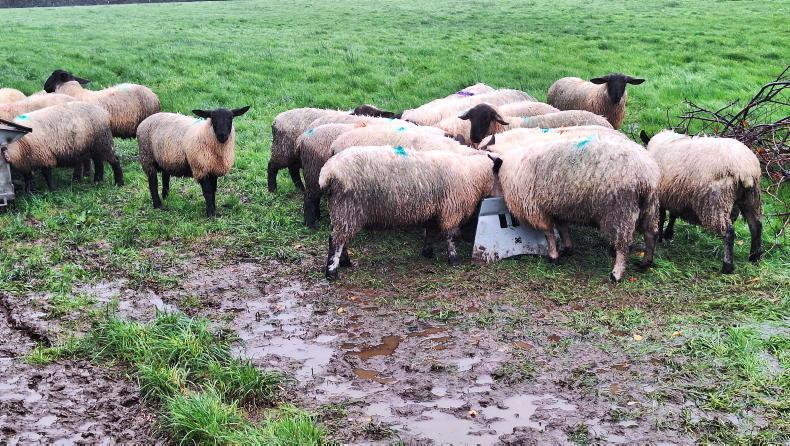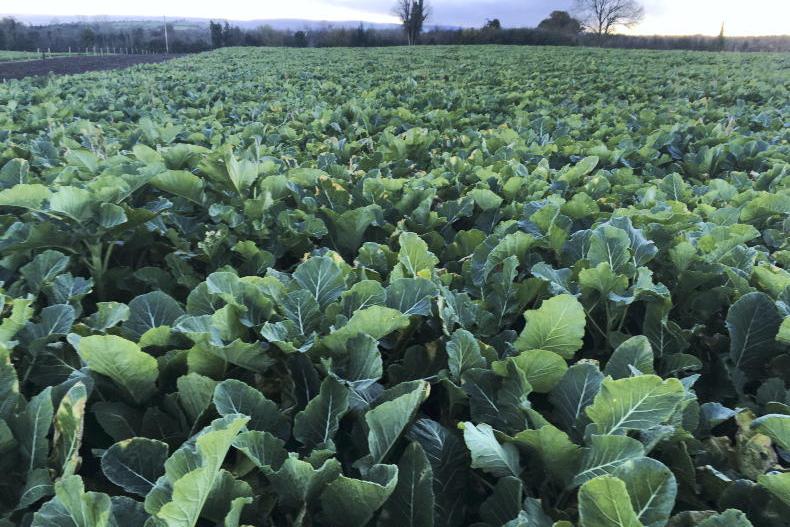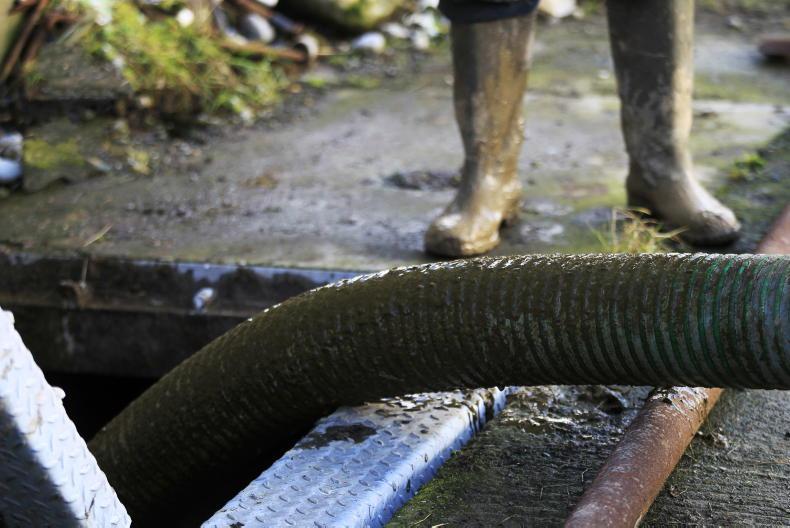While it won’t be common practice on the majority of Irish beef farms, there will be farmers operating on drier land that graze forage brassicas during winter.
Kale and forage rape are the most common brassica crops used for winter grazing.
Where cattle are moving on to these crops, outlined are five tips to grazing management.
1 Set the wire up to offer the widest feed face possible
Electric fencing wires are required to give controlled grazing on forage brassicas. Ideally, the wire should be set up to offer the widest possible feed face from boundary to boundary.
This gives all cattle access to the crop once the wire is moved to provide a fresh allocation. It also means cattle are more likely to get their fill.
With a shorter feed face, it is possible some cattle will not be able to eat to appetite, making it more likely that animals will break through fencing wires.
After a few days of moving the fence, it will be easier to gauge how big of an allocation to give animals to last 24 hours.
When you move the fence to give a new allocation, always check that the crop is not earthing the wire.
2 Be wary of frost
Heavy frost is likely to become more common as winter progresses. On mornings when a heavy frost is present, do not move the fence until it has thawed.
Frost increases nitrate levels in the plant, which can poison cattle. Wait until mid-morning before moving the wire, after the frost has lifted.
If necessary, offer an additional bale of straw or silage, or some meal, to keep cattle settled until the fence is ready to move.
3 Fibre
Forage brassicas are low in fibre, so cattle should always have ad-lib access to some form of fodder such as silage, hay or straw.
Around 50% of the cattle’s dry matter intake should come from the brassica crop, with the other 50% from the silage or straw.
As a rule of thumb, one round bale of silage should feed 30 cows per day. If bales are being eaten at a faster rate, then increase forage allowance.
Ideally, bales will have been lined out in the field before grazing starts. This way, only the ring feeder has to be moved, preventing wet soils becoming rutted by machinery during winter.
4 Stop grazing before the crop flowers
Once forage crops start to flower, do not graze with cattle. Flowering plants can be toxic and cattle are more prone to problems such as redwater, goitres and a sudden loss of appetite.
5 Parasite control and mineral supplementation
Cattle that are outwintered still need treating for internal parasites such as worms and fluke, so include them in the winter health programme. A second fluke dose may be needed in spring.
Forage brassicas are also low in minerals, particularly iodine, so make sure animals are properly supplemented with trace elements.
A bolus works well, but as the fence needs moving daily, offering powdered minerals every day is just as practical. Mixing minerals with 0.5kg to 1kg/head of barley helps to bulk out the mineral allocation.
Read more
Belgian Blue is gold with top of €10,100
Pressure on factories to hike beef prices
While it won’t be common practice on the majority of Irish beef farms, there will be farmers operating on drier land that graze forage brassicas during winter.
Kale and forage rape are the most common brassica crops used for winter grazing.
Where cattle are moving on to these crops, outlined are five tips to grazing management.
1 Set the wire up to offer the widest feed face possible
Electric fencing wires are required to give controlled grazing on forage brassicas. Ideally, the wire should be set up to offer the widest possible feed face from boundary to boundary.
This gives all cattle access to the crop once the wire is moved to provide a fresh allocation. It also means cattle are more likely to get their fill.
With a shorter feed face, it is possible some cattle will not be able to eat to appetite, making it more likely that animals will break through fencing wires.
After a few days of moving the fence, it will be easier to gauge how big of an allocation to give animals to last 24 hours.
When you move the fence to give a new allocation, always check that the crop is not earthing the wire.
2 Be wary of frost
Heavy frost is likely to become more common as winter progresses. On mornings when a heavy frost is present, do not move the fence until it has thawed.
Frost increases nitrate levels in the plant, which can poison cattle. Wait until mid-morning before moving the wire, after the frost has lifted.
If necessary, offer an additional bale of straw or silage, or some meal, to keep cattle settled until the fence is ready to move.
3 Fibre
Forage brassicas are low in fibre, so cattle should always have ad-lib access to some form of fodder such as silage, hay or straw.
Around 50% of the cattle’s dry matter intake should come from the brassica crop, with the other 50% from the silage or straw.
As a rule of thumb, one round bale of silage should feed 30 cows per day. If bales are being eaten at a faster rate, then increase forage allowance.
Ideally, bales will have been lined out in the field before grazing starts. This way, only the ring feeder has to be moved, preventing wet soils becoming rutted by machinery during winter.
4 Stop grazing before the crop flowers
Once forage crops start to flower, do not graze with cattle. Flowering plants can be toxic and cattle are more prone to problems such as redwater, goitres and a sudden loss of appetite.
5 Parasite control and mineral supplementation
Cattle that are outwintered still need treating for internal parasites such as worms and fluke, so include them in the winter health programme. A second fluke dose may be needed in spring.
Forage brassicas are also low in minerals, particularly iodine, so make sure animals are properly supplemented with trace elements.
A bolus works well, but as the fence needs moving daily, offering powdered minerals every day is just as practical. Mixing minerals with 0.5kg to 1kg/head of barley helps to bulk out the mineral allocation.
Read more
Belgian Blue is gold with top of €10,100
Pressure on factories to hike beef prices










SHARING OPTIONS